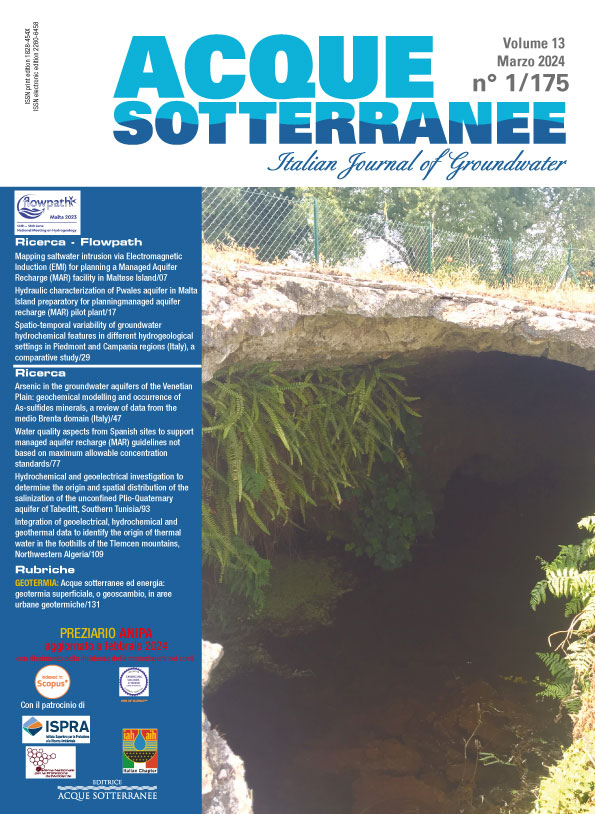Hydraulic characterization of Pwales aquifer in Malta Island preparatory for planning managed aquifer recharge (MAR) pilot plant
All claims expressed in this article are solely those of the authors and do not necessarily represent those of their affiliated organizations, or those of the publisher, the editors and the reviewers. Any product that may be evaluated in this article or claim that may be made by its manufacturer is not guaranteed or endorsed by the publisher.
Authors
Whitin the aim to reduce the water demand by increasing water use efficiency and providing alternative water resources, and mainly to meet the demand of good quality irrigation water for agriculture, the Energy and Water Agency of Malta is planning to develop a Managed Aquifer Recharge pilot plant in Pwales Valley to improve the quantitative and qualitative status of the groundwater body. For this reason a detailed hydraulic characterization of the valley was carried out. Specifically, hydraulic properties of the rocks that constitute strata atop of the Pwales aquifer were determined by means of both laboratory measurements on samples and field test carried out in the studied area. The water retention and hydraulic conductivity functions, which relate the matric potential, ψ, and hydraulic conductivity, K, to the water content, θ, respectively, were measured using three experimental methods because each of them allows to obtain data points in a specific wet range. The water retention and hydraulic conductivity functions were measured on samples extracted from blocks of Upper Coralline Limestone formation, that hosts the aquifer, collected in three different quarries: Ghian Tuffieha, Mellieha and San Martin areas. The measured water retention and hydraulic conductivity data were fitted with LABROS SoilView Analysis software that allows to describe the functions and obtain the parameters which are crucial for modelling the water flow and transport processes in the critical zone. In addition, large ring infiltrometer test was carried out to determine the field saturated hydraulic conductivity, Kfs, and the average infiltration rate. Knowledge of the hydraulic characteristics of the Upper Coralline Limestone, completely missing in the scientific literature, allows developing a local groundwater-flow numerical model in order to better describe and understand how the water flows from the soil to the groundwater of the valley and visualize different environmental scenarios such as the potential effects of Managed Aquifer Recharge plant in the Pwales Coastal Groundwater Body.
How to Cite

This work is licensed under a Creative Commons Attribution-NonCommercial 4.0 International License.
PAGEPress has chosen to apply the Creative Commons Attribution NonCommercial 4.0 International License (CC BY-NC 4.0) to all manuscripts to be published.














